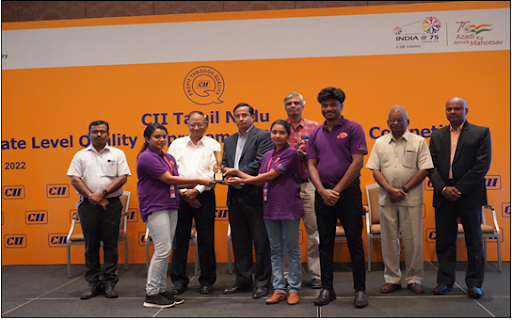C. Vishnu
Deputy Nursing Superintendent, Kauvery Hospital, Hosur, Tamilnadu, India
Abstract
Mucormycosis is a rare but aggressive, life-threatening infection caused by a group of fungus called mucormycetes. These fungi live throughout the environment. People get Mucormycosis by coming in contact with the fungal spores in the environment. Mucormycosis requires prompt diagnosis and early treatment. Treatment usually consists of antifungal medications and surgery. A sudden surge was reported in Mucormycosis in cases with COVID-19. It is a rare but serious complication of Covid-19. Infection with Mucormycosis can cause loss of eye and may be life-threatening. Mucor infection may occur during Covid-19 infection or a few weeks after recovery from Covid-19. It is commonly called as Black Fungus, the reference to the color drawn from the appearance of the necrotic tissue.
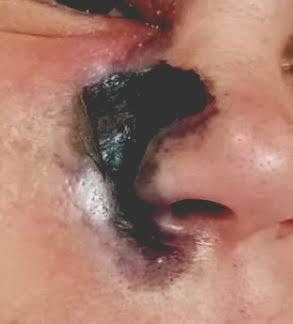
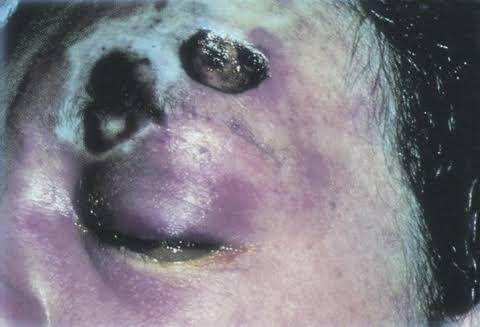
Background
As per the data collected, we found that among the 30 patients with Mucormycosis in the month of June, 12 developed phlebitis. The common factor we found among those 12 patients was the usage of Inj. Amphotericin-B.
| No | Particulars | Total |
| 1 | Total number of Mucormycosis | 30 |
| 2 | No: Patients who developed phlebitis | 12 |
| 3 | No: Patients who did not develop phlebitis | 18 |
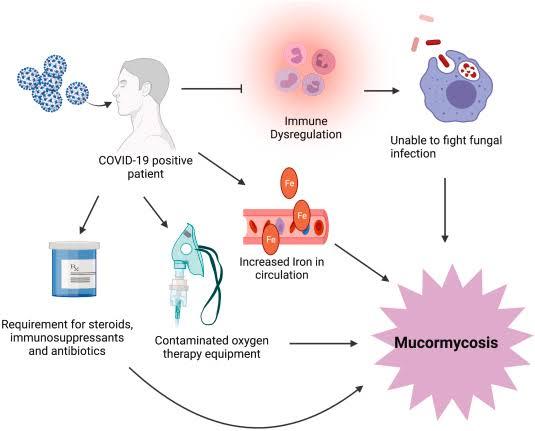
Problem Selected
Increased incidence of peripheral line complications among Mucormycosis patients receiving Inj. Amphotericin B.
Inj. Amphotericin B
Amphotericin B injection is used to treat serious and potentially life-threatening fungal infections, and comes in a class of medications called antifungal. It works by inhibiting the growth of fungi that cause infection.
It is the most effective FDA approved drug for the treatment of Mucormycosis patients.
Problems
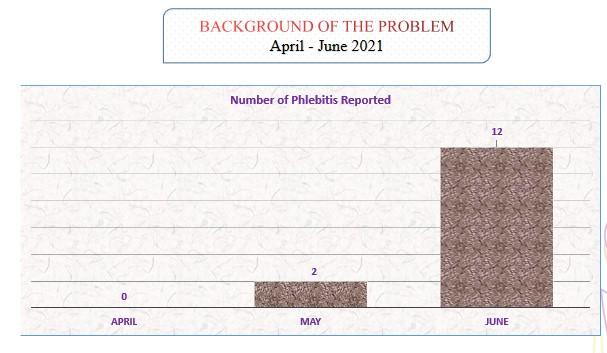
Impact of Phlebitis:
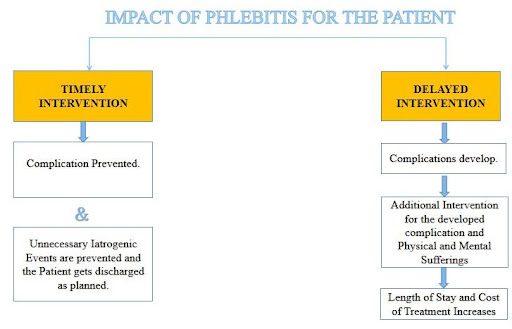
- Venflon related complications increase hospital length of stay up to 5 days.
- Average length of Mucormycosis Patient’s stay in a hospital: 5 days.
- The subsequent treatment for the complication adds to an estimated cost of around Rs. 30,000 to the patient bill.
Impact of Phlebitis on the Institution
- Patients and attenders will lose the confidence over the treatment provided in the institute. Further, they may not visit again and also will not refer their colleagues/relatives to our institution.
- The Top management may not have a good impression of the Clinical Team.
- May affect our Organization’s Brand Image.
- May affect the target of quality indicators.
- May fail to achieve our patient satisfaction thereby affects hospital’s business objectives.
- May result in increasing Negative Feed backs from the patients.
Process Sequences
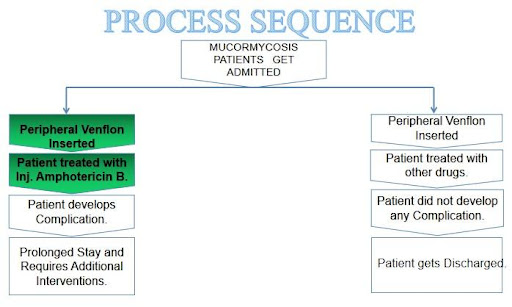
Problem Analysis
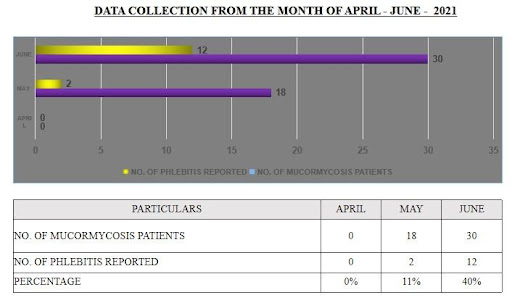
Based on the Man, Material, Method & Environment regarding Ishikawa diagram
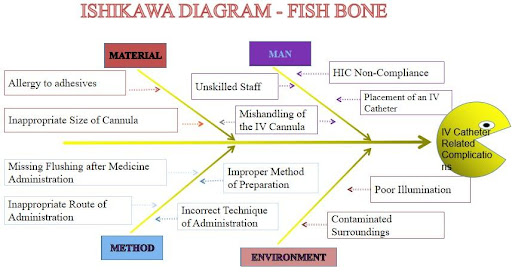
Aim
To reduce the incidence of phlebitis among mucormycosis patients from 40% to NIL, within 1 month.
Root cause Analysis
The medicine was administered in a bright room, which could not tackle the photo-sensitivity nature of the drug completely. – 1st ROOT CAUSE Because of the lipophilic nature of the drug, where by there are highest chances of having few undiluted particles. – 2nd ROOT CAUSE The Irritant nature of Inj. Amphotericin B is intolerable by the thin lumen of the peripheral vein. – 3rd ROOT CAUSE
Developing Solutions
Solution 1: Started administering Inj. Amphotericin B was only during nighttime and also covered the medicine bottle and IV set to adequately address the photosensitivity nature of the drug.
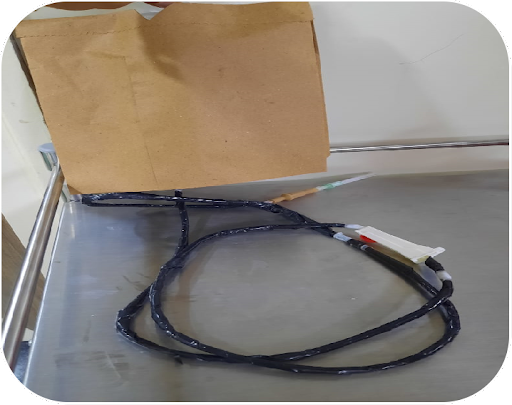
And it prevented the adverse effects & promoted comfort to the patients. There were no disadvantages while offering this solution.
Solution 2: Introduced using 0.5 Micron filter before dilution of the drug.

It prevented undiluted lipid molecules from entering the bloodstream & also associated side effects like fever and rigour.
Solution 3: Started using only Central Line for administering Inj. Amphotericin B.
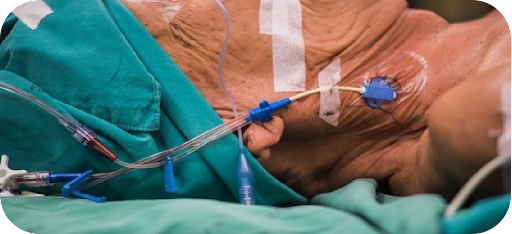
And it prevented frequent changes of Venflon.
Result
The Trail implementation was done in the month of August 1st & 2nd week, Incidence of Phlebitis was reduced from 10 to NIL on before trail for the month of July. After regular implementation on the month of August 3rd & 4th week, we reduced the occurrence of Phlebitis to NIL and achieved the target.
Standardization
- Updated SOP regarding mandatory use of Filter.
- Updated SOP on the use of covers for Inj. Amphotericin B while administering.
- Regular audits by Clinical Pharmacists on adherence to updated SOP.
- Training for the staffs regarding the updated SOP on administering Inj.Amphotericin B.
- Regular audits by Infection Control Nurse to prevent occurrence of Phlebitis.
Tangible benefits for the Institution:
| Cost of implementation | Benefit | ||
| Particulars | Amount spent (approx) | Particulars | Amount gained (approx) |
| Implementation of administering only during night and only through central line. | NIL | Increase in referrals from the patients.
4 OP Referral Patient 2 IP Referral Patient |
Rs. 4000
Rs. 60,000 |
| Purchase of a cover bundle for covering the Medicine and IV Set. | Rs. 500 | Chances of patient’s revisit increases, due to satisfaction.
2 Revisits. |
Rs. 50,000 |
Tangible benefits for the Patients:
| Cost of implementation | Benefit | ||
| Particulars | Amount spent (approx) | Particulars | Amount saved (approx) |
| Implementation of administering only through central line. (Alternating Venflon with Central Catheter) | Rs. 2000 | Reduced Length of Stay In hospital. | 5 Days –
Rs. 25,000 |
| Total money spent | Rs. 2000 | Reduced Associated Complications. | Rs. 30,000 |
| Total money gained | Rs. 55,000 |
Intangible Benefits
| For the Patients | For the Institution | For the Staffs |
| 1. Speedy Recovery.
2. Psychological well being. |
1. Improved quality of care.
2. Good Brand Image 3. Quality Indicators within Bench Mark. 4. Increased customer satisfaction. |
1. Stress free work place.
2. Increases confidence. 3. Team gains good impression from the Top Management. |
Conclusion
Through our systematic approach we were successful in reducing the incidence of Phlebitis among the Mucormycosis patients to NIL and in preventing the negative impact of Inj. Amphotericin among the Mucormycosis patients.
Our Experience in QIT competition
Over the years, organizations have been successfully practicing Quality in Circle for excellence. Organizations have realized that, to survive in today’s competitive environment, they need “Quality Circle – Continuous Improvement.” Quality Circle applies to all employees from the CEO to the assembly line workers of processes in manufacturing, engineering, supporting business processes and management.
The Quality Circle refers to the group of individuals who meet on a regular basis to discuss the work-related problems. The purpose behind the formation of quality circle is to motivate employees to share the problems affecting their work area and help in improving the performance of the organization as a whole.
A Quality Circle is a participation management technique to manage and improve the quality of the entire organization. The power of a Quality Circle comes from mutual trust between managers and employees, which lead to more mutual understanding. The purpose of a Quality Circle is to build towards a good relationship with employees, so they will show more interest and devotion in the work they do.
Over that, they selected the Top 3 teams from Large, Medium and Small Scale members from both the
- Manufacturing,
- Process
- Service sectors will be awarded.
So, we decided to execute our Mucormycosis project on QIT competition and applied under the category of Service sector through the registration form. And we defined the topic as “To reduce the incidence of Phlebitis among the Mucormycosis patients to NIL and to prevent the negative impact of Inj. Amphotericin among the Mucormycosis patients.”
CII, Tamil Nadu is organizing the 24th State Level Quality Improvement Techniques Competition 2022 for Executives & Supervisors on 27 October 2022 at Hotel ITC Grand Chola, Chennai. Around 200+ members from 40+ companies have participated in this competition. We won the Second prize in the category of Service Sector.
- Our earlier work in this area of care received the prize on QC Rhodium Award from ABK-AOTS in 2022.
- Both experiences were amazing and led to learning new things.
